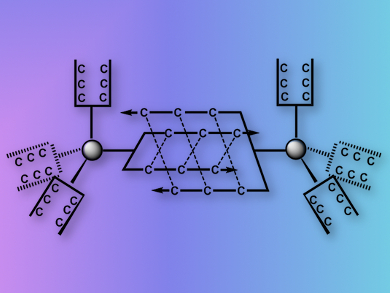There is a need for materials that respond to chemical or physical stimuli with a change in their structure. While a transition between a water-soluble form and a solid is not uncommon for DNA-based structures, systems that transition between three different states at room temperature and ambient pressure are rare.
Clemens Richert and Shiliang He, University of Stuttgart, Germany, have developed a “smart soft matter” system, which consists of a solution of DNA that can turn into a jelly-like hydrogel, but also into solid particles. It is an aqueous solution that reacts when “challenged” by new environmental conditions.
The team used a rare pairing motif of DNA, called “i-motif”, to turn a usually defenseless, long linear biomolecule into a molecule that can respond to adverse situations. This highly branched molecule gels up when “threatened” by acid through the non-covalent pairing of its numerous short DNA arms (pictured). It bundles up into particles when exposed to metal cations, particularly when aggressive divalent cations are introduced. This behavior is reversible.
The branched DNA derivative is resilient. It can also encapsulate small molecules during gelation or particle formation, which the team demonstrated using dyes. In the future, it may be possible to shield or to harvest precious dyes when they are “threatened” by acid or degrading conditions. The changes in color and fluorescence upon gelation may also be used to construct sensors that monitor changes in the environment.
- A Three-State System Based on Branched DNA Hybrids,
Shiliang He, Clemens Richert,
Chem. Eur. J. 2018.
https://doi.org/10.1002/chem.201705941



